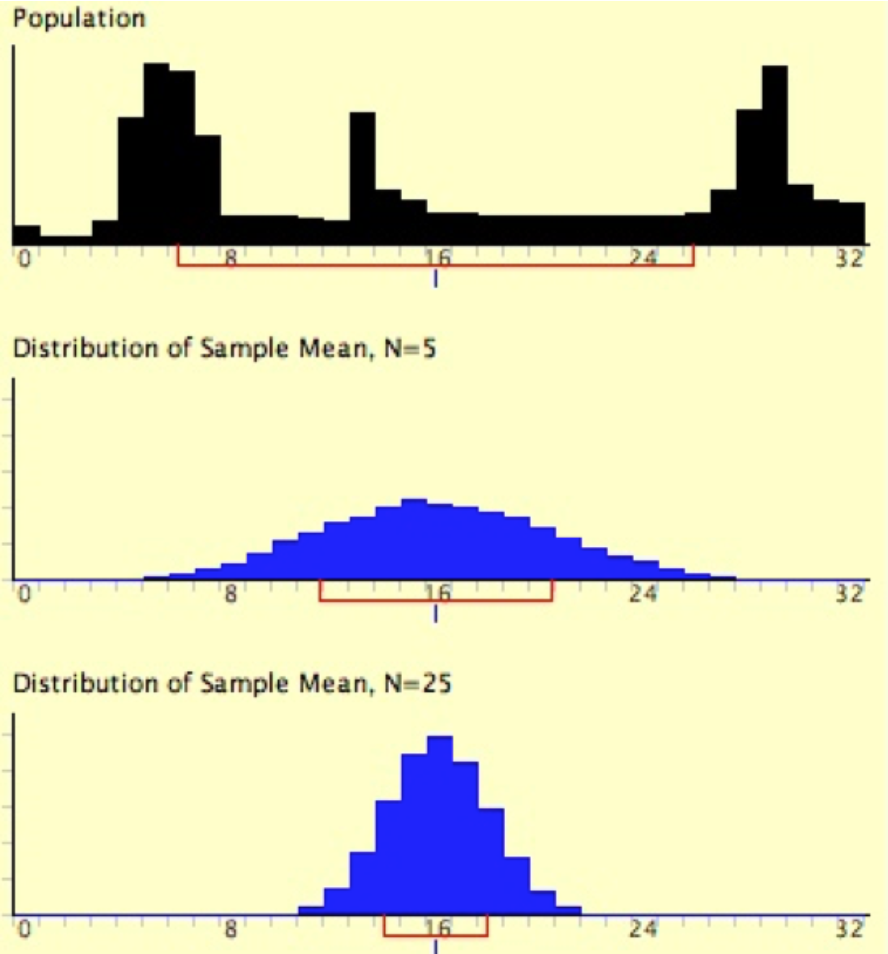Sampling Distribution

Learning Objectives
1. What is Sampling distribution of mean?
2. State the mean and variance of the sampling distribution of the mean
3. Compute the standard error of the mean
4. State the central limit theorem
1. What is Sampling distribution of mean?
The most common type of sampling distribution is of the mean. It focuses on calculating the mean of
every sample group chosen from the population and plotting the data points. The graph shows a normal
distribution where the center is the mean of the sampling distribution, which represents the mean of the
entire population.
2. State the mean and variance of the sampling distribution of the mean
Mean:
The mean of the sampling distribution of the mean is the mean of the population from which the scores
were sampled. Therefore, if a population has a mean μ, then the mean of the sampling distribution of the
mean is also μ. The symbol μM is used to refer to the mean of the sampling distribution of the mean.
Therefore, the formula for the mean of the sampling distribution of the mean can be written as
μM = μ
Variance:
The variance of the sampling distribution of the mean is computed as follows:

That is, the variance of the sampling distribution of the mean is the population variance divided by N, the sample size (the number of scores used to compute a mean). Thus, the larger the sample size, the smaller the variance of the sampling distribution of the mean.
3. Compute the standard error of the mean
The standard error of the mean is the standard deviation of the sampling distribution of the mean. It is
therefore the square root of the variance of the sampling distribution of the mean and can be written as:

The standard error is represented by a σ because it is a standard deviation. The subscript (M) indicates
that the standard error in question is the standard error of the mean.
4. State the central limit theorem
The central limit theorem states that:
Given a population with a finite mean μ and a finite non-zero variance σ2, the sampling distribution of the
mean approaches a normal distribution with a mean of μ and a variance of σ2/N as N, the sample size,
increases.
The expressions for the mean and variance of the sampling distribution of the mean are not new or
remarkable. What is remarkable is that regardless of the shape of the parent population, the sampling
distribution of the mean approaches a normal distribution as N increases.
Figure 1 shows the results of the simulation for N = 2 and N = 10. The parent population was a uniform
distribution. You can see that the distribution for N = 2 is far from a normal distribution. Nonetheless, it
does show that the scores are denser in the middle than in the tails. For N = 10 the distribution is quite
close to a normal distribution. Notice that the means of the two distributions are the same, but that the
spread of the distribution for N = 10 is smaller

Figure 2 shows how closely the sampling distribution of the mean approximates a normal distribution even
when the parent population is very non-normal. If you look closely you can see that the sampling
distributions do have a slight positive skew. The larger the sample size, the closer the sampling distribution
of the mean would be to a normal distribution..

References
https://onlinestatbook.com/2/sampling_distributions/samp_dist_mean.html
The law of large numbers, in probability and statistics, states that as a sample size grows, its mean gets closer to the average of the whole population.